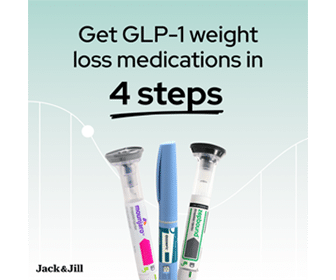How do you use a deload period to prevent overtraining, injuries, and setbacks? If you have been training regularly, you might think that one way to see more progress is by training even harder for weeks or even months. However, this is not the case. If you have a regular training routine, you can get stronger by having regular recovery periods from exercise.
GAS Principle
GAS stands for general adaptation syndrome. The GAS Principle uses three stages, according to the originator, Dr. Hans Selye:
- Alarm Stage: caused by performing intense stress (the overload principle).
- Resistance Stage: activated by muscles adapting to resist stress weights more efficiently (overcompensation, SAID, and Use/Disuse principles).
- Exhaustion Stage: created by a persistent application of stress that exhausts reserves and stops training.
The GAS Principle that incorporates a deload period allows you to match the rest period with the workload to prevent overtraining. Exercises that provide much trauma to muscles require more rest time, while activities with little or no trauma require less downtime. Progressive overload, while necessary to build muscle, builds stress and damages muscle over time, slowing down and eventually stopping muscle growth according to the last state of the GAS Principle.
Overtraining occurs when an athlete sees a decrease in performance, plateaus, or injuries because of repeatedly performing at a level that exceeds recovery capacity. When you over-train, your body remains in a catabolic state instead of switching to an anabolic state.
How to avoid overtraining and overreaching
- Use simple, scientific weight training and reloading to employ a carefully devised cycle method.
- Vary your training methods.
- Take advantage of scientific methods and principles
- Use Research proven nutrition and supplementation methods
- Practice good weightlifting form.
- Get 8 to 10 hours of sleep each night and adequate rest.
- Use yoga, meditation, and other mental, emotional, and physical restoration methods.
- Avoid life stressors that lead to negative emotions like frustration, anger, sadness, and worry.
- Adopting and implementing a robust deload program
A deload is when you take a break from your regular workout routine. A deload will give your muscles time to rebuild and grow stronger. Once your muscles get repaired, it will help restore cortisol and testosterone levels as you rest. After rest, you will resume your exercise routine much stronger and well-rested.
A deload is part of a long-term plan to help you build strength, speed, and power.
A deload will help to increase your muscle tone. By reducing your exercise levels, maintaining your protein intake, and increasing your carbohydrate intake, your body will store more glycogen than it usually would. A deload will help to build up your muscle tissue. Storing more glycogen will make your muscles bigger and fuller and give you more energy/fuel for weightlifting. It will also allow you to train for more extended periods.
A deload is excellent, as it allows you to continue with specific exercises during your rest period. However, overtraining can eventually cause you to crash. Once you have reached your peak and blown through it, the best way to deal with this is to back off training to give your body a chance to recover. A regular deload will prevent you from peaking too early and crashing.
Some signs that show you need rest and recovery include:
- When you do not feel motivated to workout
- Feeling weak
- When you consistently can not lift heavy weights,
When you deload, you can take a week off your regular workout routine. You do not have to stop exercising altogether. Instead, you can scale back on the amount and intensity of your exercises.
Some ways to decrease your exercise volume include:
- Reduce your training time
- Take up walking or yoga
- Reduce the intensity of your workout
- Decrease weights and repetitions
- Changing your routine
- Reduce your training routine by 50%
When you do a deload, the critical factors to control are volume, intensity, and the type of exercise you do. A deload will allow your body to recover. Also, it will enable you to resume training when you feel fresher and more robust and when your body has healed.
A deload helps to minimize the chances of injury. It will help you reach high levels of performance with minimal chances of setbacks or injuries. A deload minimizes setbacks and injuries because the time off maximizes your recovery, so you will perform better and get much more out of your training.
Final Words on Deload – How to Prevent Overtraining, Injuries, and Setbacks
A deload should be part of your exercise routine. It will help you recover from low energy levels, plateaus, and poor sleep. In addition, a week of unwinding can help you. Your legs, chest, back, and other majors will thank you, grow more prominent, and perform better. Also, a deload can help you tone your abs by boosting your hormones and causing your muscles to burn more energy.
If you or someone you know is considering bodybuilding, share this article on Facebook or Twitter so that others can learn more about building muscle.




